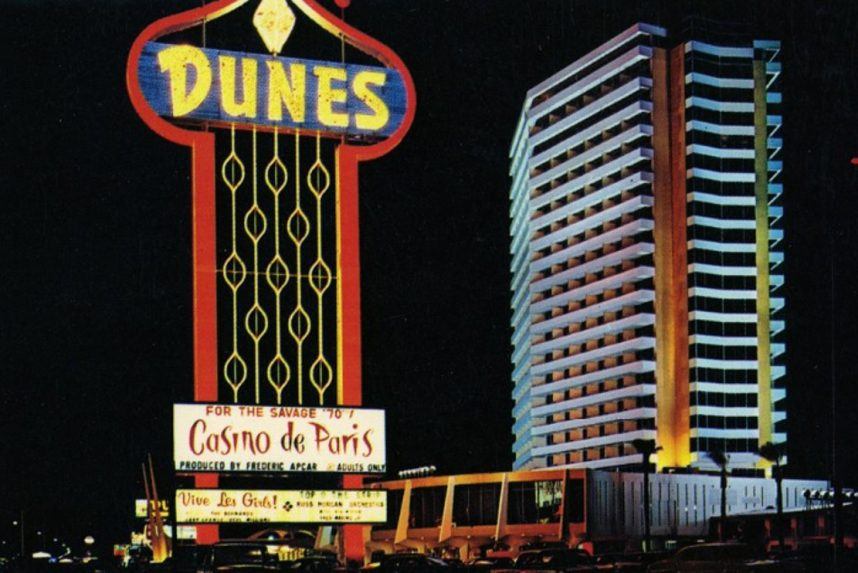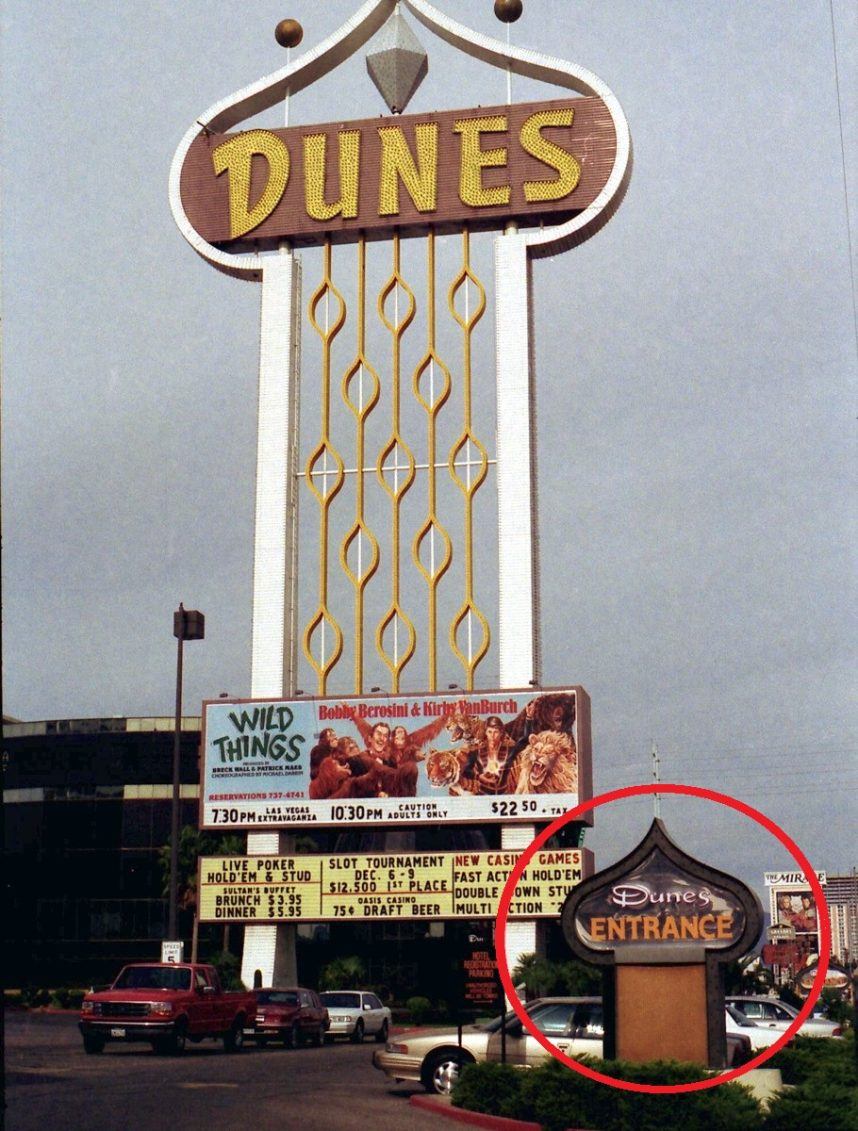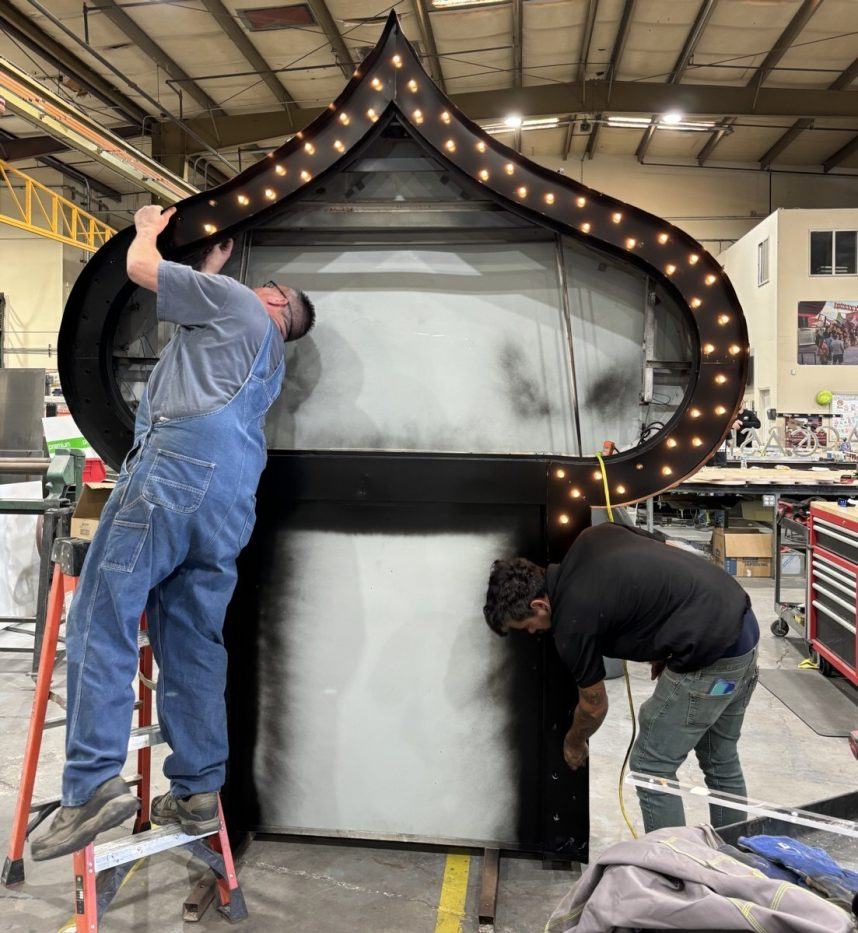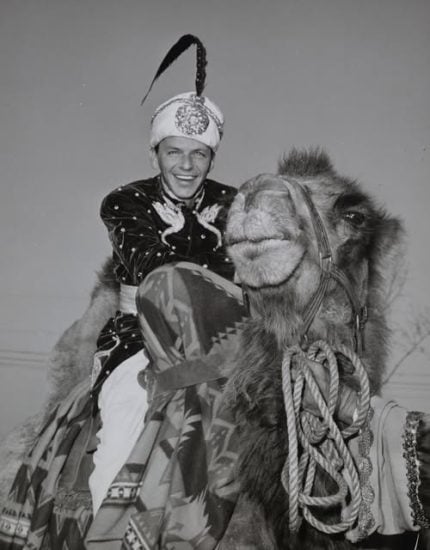Neon Museum to Relight Only Surviving Dunes Las Vegas Sign
Posted on: September 8, 2025, 05:11h.
Last updated on: September 10, 2025, 07:36h.
The towering neon pylon that once flashed “DUNES” 181 feet over the Las Vegas Strip was the tallest freestanding sign in the world when it was activated on Nov. 12, 1964. And, because it appeared in almost every Hollywood movie establishing shot of the Strip for 30 years, it became a part of America’s collective Las Vegas memory.

Honey, I Shrunk the Sign

Unfortunately, the Dunes sign that the Neon Museum is relighting on Sept. 26 is not the famous one. That sign was imploded along with the Dunes in 1993 — three years before the Neon Museum was founded to prevent wanton historical destruction like this.
As the only known example of Dunes signage to survive the implosion, the puny, 10-foot driveway entrance sign becomes the one preserved for the ages by default.
It was purchased in 2002 by The Neon Museum, which hired local artisans at Hartlauer Signs to perform a five-month restoration earlier this year. It involved repairing a large crack in the sign’s face and recreating its original animation pattern using historically accurate bulbs.
“This restoration represents everything the Neon Museum stands for: preserving the artistry, ambition, and bold spirit that built Las Vegas,” said Aaron Berger, executive director of the museum, making the best of a disappointing situation he had nothing to do with. “The Dunes sign represents a time when the city was rapidly reinventing itself through spectacle and imagination.”
It was also a time when the city shamefully failed to preserve its unique neon heritage.

Flying Carpets, Falling Profits
The Dunes opened in May 1955 with 194 rooms, conceived as a modern reimagining of Arabian Nights Baghdad. Guests were welcomed with costumed greeters, opulent décor and themed architecture.
Designed by Bob Dorr and built by McNeil Construction, the Dunes was best known for the Sultan’s Table fine-dining experience and Minsky’s Follies, the city’s first topless revue.
Developed by a group led by Major Riddle and Robert “Jake” Gottlieb, the Dunes struggled financially from the start.
To help drum up more interest, a second grand opening was held on Sept. 14, 1955. Frank Sinatra rode up on a camel. The stunt failed to turn the property’s fortunes around.

By 1965, the resort added the sign and a 21-story hotel tower. Those didn’t work, either. Multiple ownership changes and restructurings ensued.
Steve Wynn’s Mirage Resorts purchased the 167-acre property in November 1992 from its final owner, Japanese investor Masao Nangaku’s Nangaku Enterprises, which paid $138 million for it in 1987.
Due to a 1992 bankruptcy, Wynn wangled a fire-sale price of $75 million.
In 1993, the Dunes re-entered history as the first Las Vegas Strip resort to be imploded, drawing more than 200,000 spectators.
Its former site reopened as Wynn’s Bellagio in 1998.
The relighting ceremony for the Dunes’ driveway entrance sign on Sept. 26 is open to the public. However, tickets to the event were already sold out by the time the museum announced the ceremony via a press release.
Last Comment ( 1 )
Thanks Corey, Great history lesson. My wife and I are in our 70s and started traveling to Reno & Las Vegas back in the 70s and 80s, moving to LV in the 90s so most of the stories, like this reference properties we've frequented.